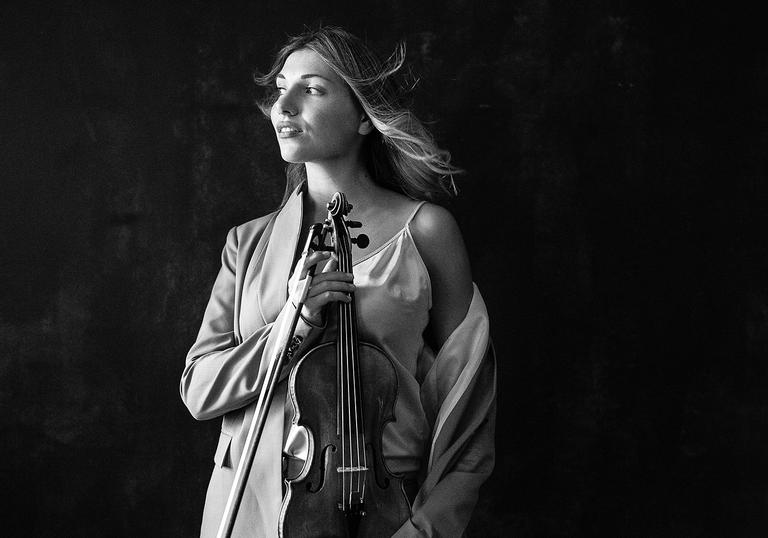
Programme and performers
Johann Sebastian Bach ‘Andante’ from Violin Sonata No 2
Fazıl Say Sonata No 2, Mount Ida
1. Decimation of Nature
2. Wounded Bird
3. Rite of Hope
Vasco Mendonça a box of darkness with a bird in its heart
Maxim Shalygin KAYA
Diana Tishchenko violin
José Gallardo piano
Artist biographies
Diana Tishchenko is considered one of the most exciting artists of today’s classical music scene, particularly known for her rich range of the violin repertoire. Whereas being praised for her authentic, stylistically refined performances within Barock Epoche she extends her programs until the present period, especially enjoying collaboration with contemporary composers, who often dedicate their compositions to herself.
In 2018, Diana Tishchenkowon the Grand Prix at the legendary Long Thibaud Crespin International Competition in Paris. Her Parisian debut CD Strangers in PARadISe has been released on Warner Classics to the highest critical acclaim.
After the European Concert Hall Organization (ECHO) named her a Rising Star, Diana Tishchenko appears in 20 major concert halls in Europe including the Elbphilharmonie Hamburg, the Paris Philharmonie, the Concertgebouw Amsterdam in the 2022/23 season.
She has shared the stage with conductors such as Ivan Fischer, Lahav Shani, Andrew Litton, Joshua Weilerstein, among others, appearing with orchestras such as Deutsches Symphonie-Orchester Berlin, giving her debut performance at the Berliner Philharmonie, as well as Orchestre National d’Île-de-France, Berlin Baroque Soloists, and Orchestre Philharmonique de Strasbourg and Budapest Festival Orchestra.
Diana appears regularly at major festivals, including the Rheingau Musik Festival, the Schleswig-Holstein Musik Festival, La Folle Journée de Nantes and Tokyo, the Prades Festival Pablo Casals. She will be debuting at the Pierre Boulez Saal appearing at Barocktage 2022 of the Berlin State Opera.
The Crimean-born violinist began her violin studies with her aunt in native Simferopol, and later at Kyiv’s specialized music school for gifted children. She received her bachelor and master degree with Ulf Wallin at the Hanns Eisler Academy of Music in Berlin and Solo Performance with Boris Kuschnir at the University of Arts Graz. A strong musical influence was provided to her by Gidon Kremer, Sir András Schiff, Rita Wagner and Ferenc Rados.
Diana Tishchenko plays a violin by Antonio Stradivari from 1695.
